It's Admissions Season!
Register for a tour or inquire to learn more about WSP’s transformative preschool-12th education.
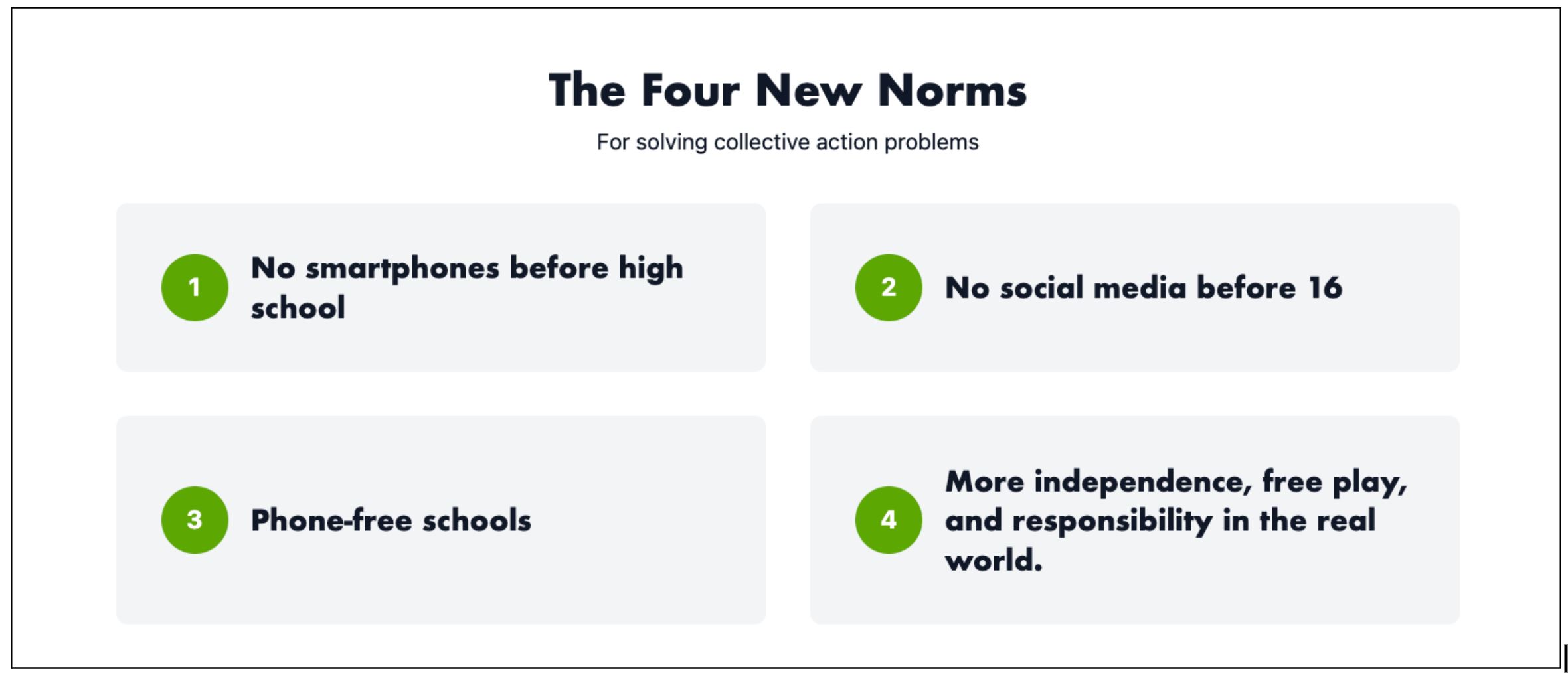
I was so eager to read Jonathan Haidt’s The Anxious Generation that I started listening to the audiobook the morning it was released. I had heard the book would speak to my growing concerns about teenage mental health. Having started my teaching career in 1980, recently I have seen quite a few changes in the culture of today’s teens, and even more so, since COVID-19, I have been concerned with the impact of technology and social media on their lives. Don’t get me wrong, our students are amazing and I am continually impressed with our younger generation in many ways. Jonathan Haidt’s book presents scholarly research that supports what we as Waldorf teachers have known for a long time about healthy practices for children, and it provides guidance about what we can do given the current climate. The research confirms that a play-based childhood is essential for healthy child development. For me, this is a watershed moment as the author provides the foundation for society to adjust our norms to support our children.
My big takeaways are:
The development of digital technology happened quickly, and much of it before we truly understood its impact on child development. Haidt brings research and data to what Waldorf Pedagogy has been saying for years – children need free play, we should delay the introduction of screens (although he says some uses, such as face-timing with family members, are fine), and that when a community or school agrees to norms (such as our cell phone locker policy in the high school), it’s better for everyone.
Then, the cherry on top was when I heard him mention Waldorf School of the Peninsula specifically as a place that supports healthy childhood development. I had to rewind to be sure, but yes, indeed, our wonderful school is mentioned in the book. I truly hope it will be a catalyst for changes that will support a culture of healthy child development. At the very least, it confirms the importance and positive impact of what we do here at WSP.
Lisa Babinet has been teaching at WSP since 2003. She is blessed to be the mother of two adult children who attended WSP from K-12, and considers providing her children with a Waldorf Education to be the best parenting decision she has made.
REFERENCES AND RESOURCES
MORE READING
QUICK WATCHES
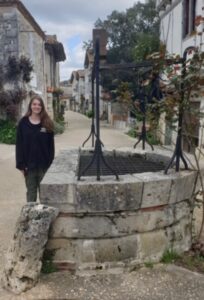
At Waldorf School of the Peninsula, education reaches far beyond the confines of the classroom and campus. Our High School Exchange program facilitates cultural immersion, offering students transformative experiences that extend across borders. I recently sat down with program participants—both students and parents—to ask them to share how these experiences have impacted their lives.
Sandy Welch, a parent of a current 11th grade student who went on an exchange to Argentina, shared that the experience provided her daughter with a cultural immersion that positively influenced her Spanish language proficiency. She also underscored the value of hosting a student as well, noting it offered her family a fresh perspective on their own culture, too. The exchange of customs and traditions facilitated mutual understanding with their host student. Sandy highlighted the joy of introducing their Argentinian student to the Bay Area and experiencing the excitement of our own cultures and customs through her eyes. Additionally, the exchange reignited the family’s commitment to regular family dinners, fostering meaningful conversation and connection. Sandy also offered some practical advice, suggesting that students concerned about missing school time can consider attending a South American school during WSP’s summer break.
“Hosting Morena brought joy, perspective, and humor to the family. It was wonderful to see our culture through her eyes.” — Sandy
 Emmery, a junior student whose exchange took her to a Waldorf School just outside of Paris, France at the end of her sophomore year, was inspired by her mother’s past exchange experience, and motivated to enhance her French proficiency. Reflecting on her time abroad, Emmery recalls exploring Paris with newfound friends, savoring local cuisine, and immersing herself in novel experiences such as learning rugby in physical education class to be highlights. Despite encountering differences in teaching styles and classroom dynamics, as the host school offered a little more hands-off learning style than WSP, Emmery found joy in expanding her horizons and forging meaningful connections with peers from diverse backgrounds. In terms of hosting another student here at home, she felt that learning to be responsible for another person had a positive impact on her, found it fun and would absolutely do it all over again.
Emmery, a junior student whose exchange took her to a Waldorf School just outside of Paris, France at the end of her sophomore year, was inspired by her mother’s past exchange experience, and motivated to enhance her French proficiency. Reflecting on her time abroad, Emmery recalls exploring Paris with newfound friends, savoring local cuisine, and immersing herself in novel experiences such as learning rugby in physical education class to be highlights. Despite encountering differences in teaching styles and classroom dynamics, as the host school offered a little more hands-off learning style than WSP, Emmery found joy in expanding her horizons and forging meaningful connections with peers from diverse backgrounds. In terms of hosting another student here at home, she felt that learning to be responsible for another person had a positive impact on her, found it fun and would absolutely do it all over again.
“Best thing ever, highly recommend it!” — Ellen
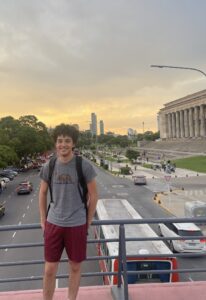 Ellen Siminoff, parent of two WSP students who have studied abroad, offers firsthand experience with both hosting students and having her teens participate in exchanges to the Spanish-speaking countries Spain and Argentina. To put it bluntly, Ellen absolutely loved hosting students. She said, “Adding another teenager to your family brings a delightful experience. They are a teen who is new and exciting to everyone, and they are thrilled to be here and be in your family. They can elevate your household with a new dynamic.” For her students, she adds that their exchanges had a significantly positive impact on their Spanish language skills. She advises that no matter what level a student is starting with, they will get so much out of their exchange experience and improve their language skills.
Ellen Siminoff, parent of two WSP students who have studied abroad, offers firsthand experience with both hosting students and having her teens participate in exchanges to the Spanish-speaking countries Spain and Argentina. To put it bluntly, Ellen absolutely loved hosting students. She said, “Adding another teenager to your family brings a delightful experience. They are a teen who is new and exciting to everyone, and they are thrilled to be here and be in your family. They can elevate your household with a new dynamic.” For her students, she adds that their exchanges had a significantly positive impact on their Spanish language skills. She advises that no matter what level a student is starting with, they will get so much out of their exchange experience and improve their language skills.
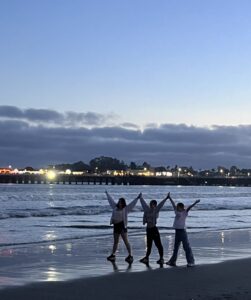 Ashley Brickeen, mother of a current 10th-grade student who is hosting a student from a Waldorf School in Paris, France, shared her family’s hosting experience and their anticipation as their daughter prepares for her own exchange trip. Excited for her student to experience life in another country within the framework of a family, Ashley has found joy in witnessing their host student’s seamless integration into their household. This being their first hosting experience, Ashley is delighted to see the strong bond formed between their host student and all of the teens in the household. They’ve enjoyed shared experiences, such as a family trip to a cabin in Utah over the February break, where they introduced their host student to skiing and snow tubing for the first time. Shown here, they took their students and classmates to a nearby beach boardwalk for fun. Ashley has enjoyed witnessing her guest’s curiosity about typical life experiences, and the opportunity it provided for their family to explore their typical surroundings in new unique ways.
Ashley Brickeen, mother of a current 10th-grade student who is hosting a student from a Waldorf School in Paris, France, shared her family’s hosting experience and their anticipation as their daughter prepares for her own exchange trip. Excited for her student to experience life in another country within the framework of a family, Ashley has found joy in witnessing their host student’s seamless integration into their household. This being their first hosting experience, Ashley is delighted to see the strong bond formed between their host student and all of the teens in the household. They’ve enjoyed shared experiences, such as a family trip to a cabin in Utah over the February break, where they introduced their host student to skiing and snow tubing for the first time. Shown here, they took their students and classmates to a nearby beach boardwalk for fun. Ashley has enjoyed witnessing her guest’s curiosity about typical life experiences, and the opportunity it provided for their family to explore their typical surroundings in new unique ways.
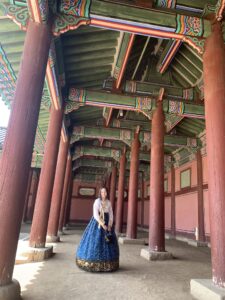 Current twelfth grade student Annika’s experience attending the Seoul Free Waldorf School in South Korea during her junior year speaks to the transformative power of international exchange. Despite initial challenges in establishing connections with a school that was brand-new to hosting international students, Annika’s perseverance led to a life-changing experience immersed in Korean language and culture. She emphasized the rewards of embracing new opportunities, regardless of initial uncertainties and challenges.
Current twelfth grade student Annika’s experience attending the Seoul Free Waldorf School in South Korea during her junior year speaks to the transformative power of international exchange. Despite initial challenges in establishing connections with a school that was brand-new to hosting international students, Annika’s perseverance led to a life-changing experience immersed in Korean language and culture. She emphasized the rewards of embracing new opportunities, regardless of initial uncertainties and challenges.
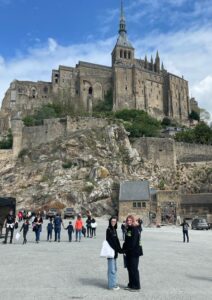 Elowyn, also a senior, felt her journey as both a host and visiting student helped reinforce the importance of adaptability and self-discovery. Having spent most of her junior year hosting two students, it was a completely new experience for her to not be the youngest in the family. She found it enjoyable to have others in the household who were her age to interact with. Upon arriving at her host family’s home, she found it interesting to navigate big cultural differences in family dynamics, which led her to a new-found independence in traveling and exploring a new city. This has given her the desire to explore solo travel in the future, and to both return to her host country of France, and other places around the world.
Elowyn, also a senior, felt her journey as both a host and visiting student helped reinforce the importance of adaptability and self-discovery. Having spent most of her junior year hosting two students, it was a completely new experience for her to not be the youngest in the family. She found it enjoyable to have others in the household who were her age to interact with. Upon arriving at her host family’s home, she found it interesting to navigate big cultural differences in family dynamics, which led her to a new-found independence in traveling and exploring a new city. This has given her the desire to explore solo travel in the future, and to both return to her host country of France, and other places around the world.
Each of the parents and students interviewed had so much valuable advice for prospective participants, far too much to list here, but some recurring points are:
If all of this sounds intriguing, the first step for a WSP high school student with an interest in going on an exchange is to talk to their Spanish teacher about it. For families within the WSP community who have younger students or students who might not yet be considering participating in an exchange program but are intrigued by the idea of becoming a host family, please reach out to Audrey Lee, the HS Admissions Director. WSP frequently seeks host families for our International Student Program as well.
Our High School Exchange Program is designed to promote global citizenship and intercultural understanding. By welcoming diverse perspectives and facilitating connections across borders, both students and families embark on journeys of personal growth and mutual enrichment. Through this program, participants develop empathy, expand their horizons, and forge lifelong connections within our ever-changing global community.
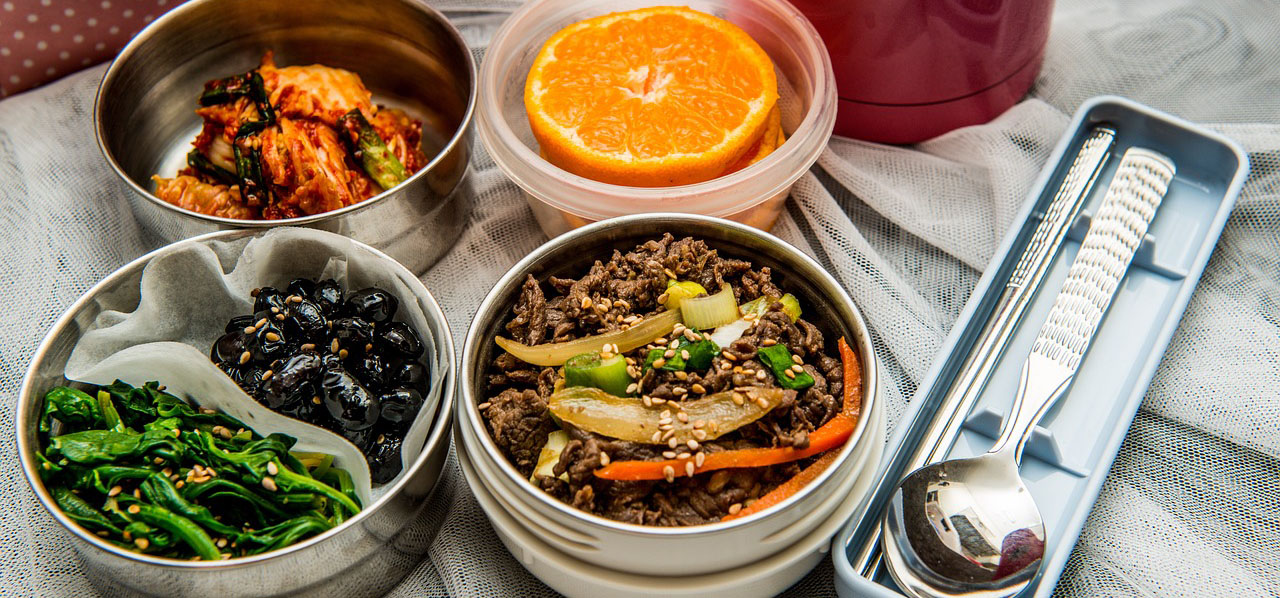
Are you tired of the same old lunch routine for your kids? Take a cue from these creative parents who’ve shared their favorite lunchbox ideas:
Say goodbye to boring lunches and hello to a world of flavorful, easy-to-make options thanks to these fantastic parent submissions. Give them a try!
Share your lunch hacks with us for a future post. If you missed February’s lunchtime ideas, click here.
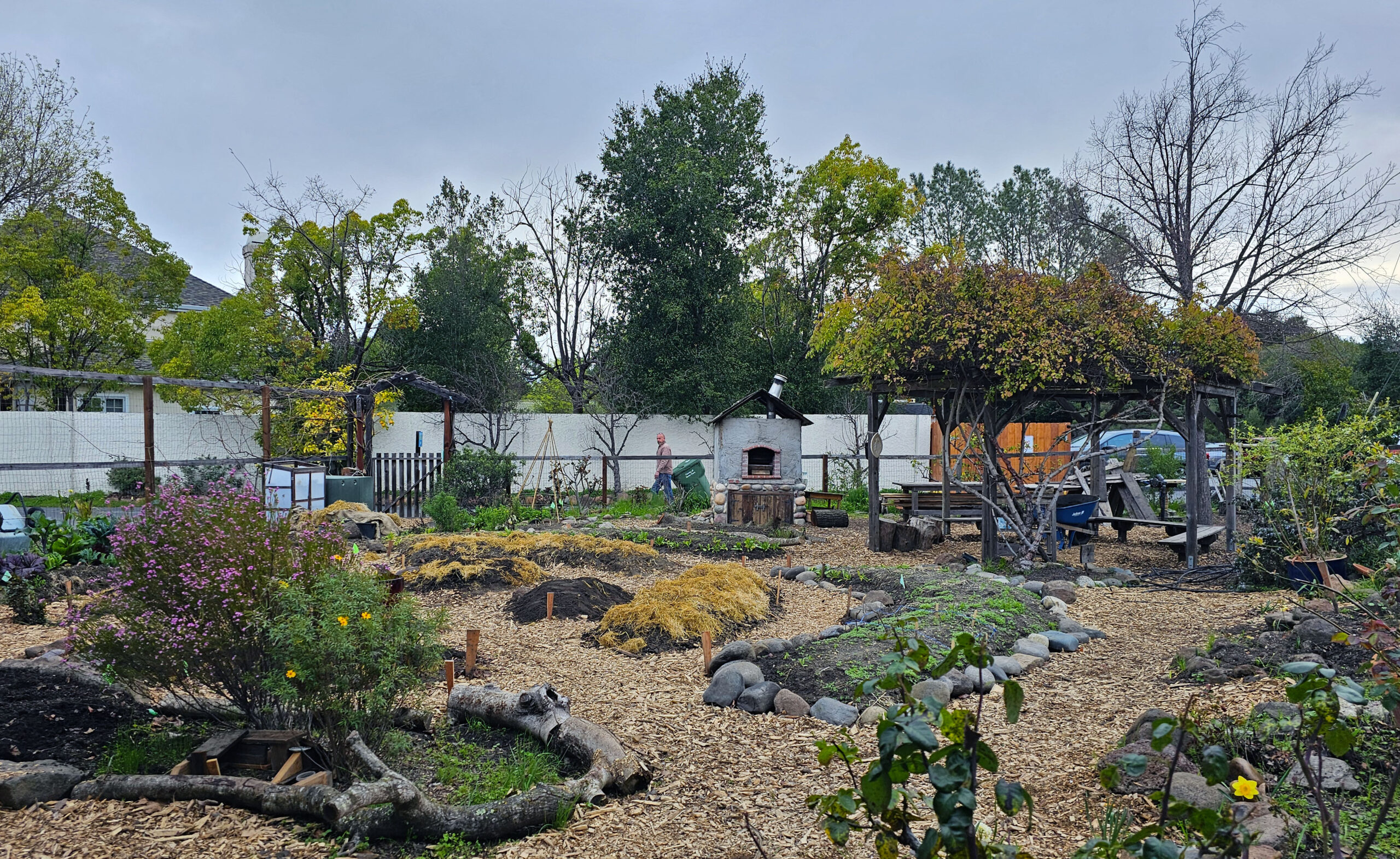
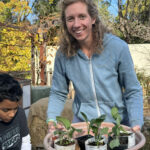 Amidst the hustle and bustle of Silicon Valley, the serene oasis of our beloved garden lies on our Los Altos campus. Our garden is an important part of the curriculum, as well as a community space, regularly used by our students, teachers, and parents. Frequent campus visitors may have noticed a lot of changes in the garden over the last couple of years. Our gardening teacher Claire has taken hold of the project with a clear vision, determination, and a whole lot of hard work. I recently had the opportunity to sit down with Claire to uncover the journey behind this transformation.
Amidst the hustle and bustle of Silicon Valley, the serene oasis of our beloved garden lies on our Los Altos campus. Our garden is an important part of the curriculum, as well as a community space, regularly used by our students, teachers, and parents. Frequent campus visitors may have noticed a lot of changes in the garden over the last couple of years. Our gardening teacher Claire has taken hold of the project with a clear vision, determination, and a whole lot of hard work. I recently had the opportunity to sit down with Claire to uncover the journey behind this transformation.
It began with the realization that our older garden boxes were falling apart, prompting the need for a fresh start. However, after removing the boxes, instead of rushing into action, Claire took a step back to reflect on what the garden and our community truly needed. It was a moment of pause and contemplation to ensure that our efforts would be meaningful and sustainable in the long run.
One of the pressing issues Claire identified was the soil quality – predominantly clay, causing it to dry out quickly, especially during the dry and hot summer months despite having irrigation. It was clear that a fundamental change was needed to address this challenge. WSP parent Nienke had previously suggested the concept of Hügelkultur to Claire, at a time when implementation of such a concept was not possible due to the garden’s layout. However, after removing the boxes Claire revisited the idea and saw its potential to revolutionize our soil management. The Hügelkultur approach involved removing cubic yards of clay soil and replacing it with logs, compost, and topsoil. This innovative method will not only help the garden retain moisture but also improve soil fertility, laying a solid foundation for future growth.

Claire envisioned the garden as more than just a space for plants and her classes – she wanted it to be a venue for healing and community, which is another big change. Drawing inspiration from San Diego State University’s Healing Garden, she incorporated a circuitous walking route, providing teachers and students with a tranquil space to walk for reflection. She felt it is important to create an environment where everyone feels welcome. The clear delineation of planting areas and walking paths will help keep the plants safe from feet.
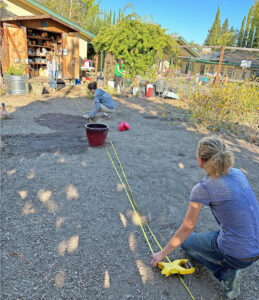
None of these remarkable changes would be possible without the hard work of her gardening students and our dedicated WSP parent volunteers. During the Wednesday morning and weekend Family Garden Work Days, the helpers have rolled up their sleeves and worked tirelessly alongside Claire, turning her vision into reality. Their contribution goes beyond mere assistance – it’s a beautiful expression of community spirit, and Claire is filled with gratitude.
As the garden’s transformation continues to unfold, there remains a need for additional support. Wednesday Volunteer mornings are still available to sign up for in Konstella, and Claire wants to make sure that all parents know they are welcome, regardless of which campus their child attends. She also seeks assistance in building structures and undertaking painting projects, offering a diverse range of tasks beyond traditional gardening duties.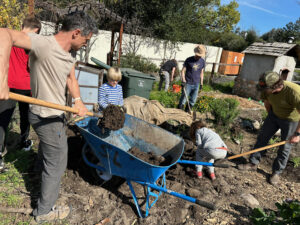
Our campus garden stands as a testament to the power of vision, collaboration, and community. Under Claire’s guidance, it has blossomed into a vibrant, inclusive space where nature thrives, and bonds are forged. As we continue to nurture and cultivate our garden, let us remember that its beauty lies not only in its blooms but in the collective effort and passion that sustains it. Thank you to Claire for leading this vision, our garden volunteers, and to our Los Altos campus grades students for creating this beautiful space for the WSP community.
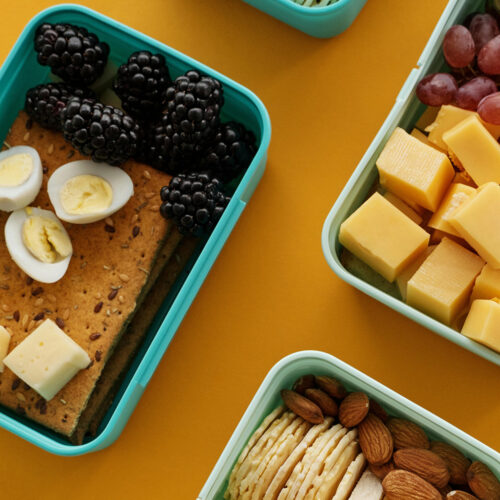
Do your carefully prepared meals come home untouched? Fear not! We asked a few WSP veterans for their best kid lunch ideas.
Quick and Tasty Ideas.
WSP parent & Sunflower Kindergarten teacher Meeta shares these mouthwatering suggestions perfect for busy schedules:

Bento Box Inspiration
The Forget Family Bento Boxes bring freshness to the forefront:
Keep it Simple
Melanie shares some timeless lunchbox wisdom:
Community Favorites 🍕🌮
Don’t forget about the school fundraisers! Taco & Burrito Tuesdays/Thursdays and Pizza Wednesdays are always a hit.
Got a lunchbox trick up your sleeve? Share it with us for next month’s feature!